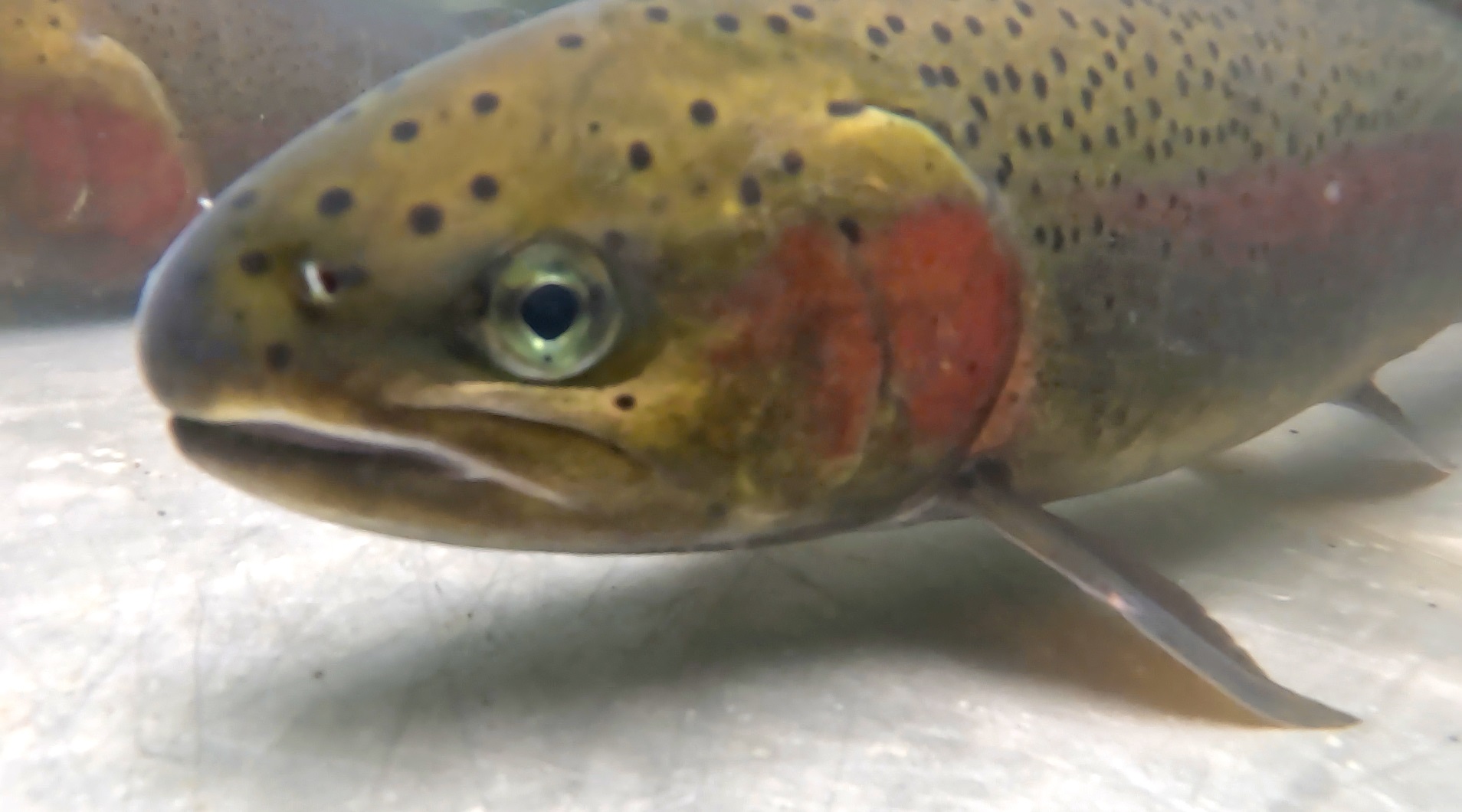
- Details
- By Native News Online Staff
Biologists from the Confederated Tribes of Warm Springs and Portland General Electric (PGE) have successfully gathered over 250 adult steelhead at the Pelton Round Butte hydroelectric project—the largest steelhead return recorded since dams were constructed on the Deschutes River in the 1960s. This early return signals a positive trend for the season, as Deschutes River steelhead runs usually continue from late summer into the following March.
“We’ve already surpassed the entire run from last year, which was our previous record,” said Megan Hill, manager of environmental science at PGE’s hydropower projects. “While there is still a long way to go toward our long-term goals for fish reintroduction, these returns demonstrate important progress and point to the efficacy of our science-based strategies for fish recovery.”
From the 1950s until 2010, Deschutes River dams prevented migratory fish, such as steelhead and salmon, from completing their ocean-to-river life cycles. In 2005, when the Pelton Round Butte project was relicensed, the Confederated Tribes of Warm Springs and PGE—co-owners of the project—initiated a collaborative effort to restore anadromous fish runs in the Deschutes River Basin. This long-term initiative aims to reconnect and revive steelhead and salmon migrations by facilitating juvenile fish passage downstream and adult returns upstream to spawning areas in the Metolius, Upper Deschutes, and Crooked Rivers.
The 250 returning steelhead traveled through the Upper Deschutes Basin as juveniles before reaching Lake Billy Chinook and being collected at a Selective Water Withdrawal (SWW) facility. From there, they were transported below the lower-most dam to continue to the ocean. After about two years, these fish returned up the Columbia and Deschutes Rivers, where they were once again collected at Pelton Dam and released into Lake Billy Chinook, heading upstream to spawn.
“I remain inspired by what I heard from elders and mentors as a young person. Their teachings and their stories echo of a time when our rivers on the Reservation had so many fish you could walk over them," said Austin Smith Jr., natural resources manager for the Confederated Tribes of Warm Springs. "In exercising our Treaty-reserved rights, we collaborate with our partners to restore this fishery to healthy levels. The progress we're making through our fish reintroduction program is a start, and it gives us hope that we can once again have enough fish for the first people of this land to sustain themselves."
Scientists attribute this year’s return to a mix of favorable ocean conditions and improvements in fish management techniques. Enhancements include acclimating young fish in-stream before release to help them imprint on the river, improving juvenile collection processes, and releasing fish into the Lower Deschutes at night to minimize predation. These refinements reflect an adaptive management approach, where data collection and science-driven adjustments guide the project’s ongoing success.
Using radio tracking, biologists will monitor the released adult steelhead to study their upstream movement and spawning behavior. In time, the offspring of these fish will embark on their own journey to the ocean, continuing this remarkable cycle.
More Stories Like This
Trump signs law that revokes some limits on drilling in Alaska’s National Petroleum ReserveSouthern Sierra Miwuk Nation Gets 900-Acres ofLand Back
Chilkat Indian Village Tells New Palmer Mine Owners They Are “Not Welcome” in Chilkat Valley
Tribes, Coastal Group Ask Army Corps to Revoke Permit for Texas Export Terminal
Michigan Tribes Tell Supreme Court: Don’t Bail Out Enbridge
Help us defend tribal sovereignty.
At Native News Online, our mission is rooted in telling the stories that strengthen sovereignty and uplift Indigenous voices — not just at year’s end, but every single day.
Because of your generosity last year, we were able to keep our reporters on the ground in tribal communities, at national gatherings and in the halls of Congress — covering the issues that matter most to Indian Country: sovereignty, culture, education, health and economic opportunity.
That support sustained us through a tough year in 2025. Now, as we look to the year ahead, we need your help right now to ensure warrior journalism remains strong — reporting that defends tribal sovereignty, amplifies Native truth, and holds power accountable.
 The stakes couldn't be higher. Your support keeps Native voices heard, Native stories told and Native sovereignty defended.
The stakes couldn't be higher. Your support keeps Native voices heard, Native stories told and Native sovereignty defended.
Stand with Warrior Journalism today.
Levi Rickert (Potawatomi), Editor & Publisher


